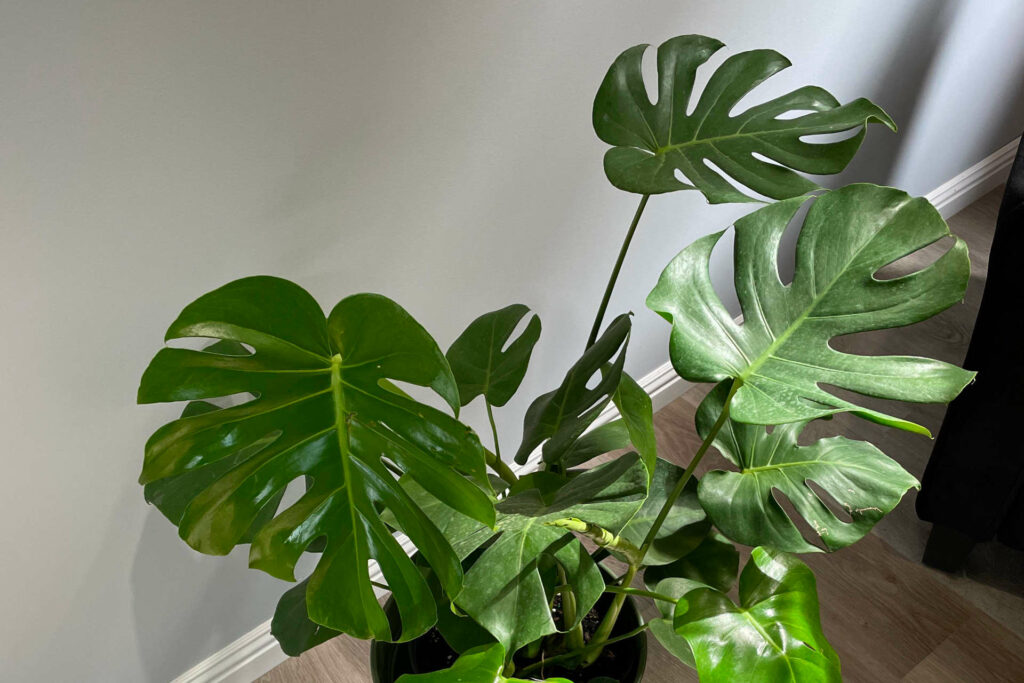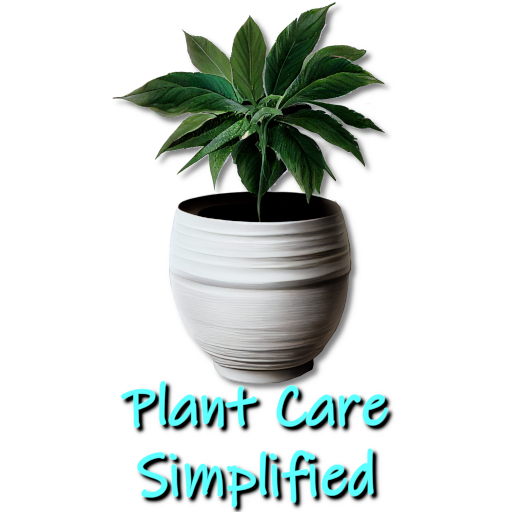What Are the Optimal Light and Temperature Conditions for A Monstera Plant?
Kim is passionate about helping people create beautiful, healthy indoor spaces that are filled with plants. Kim believes that plants make us happier, healthier human...
- Adequate and consistent light is crucial for the growth and health of a Monstera plant.
- Bright, indirect light, a warm and humid environment, and a consistent light schedule are key factors for success.
- Slow growth, pale leaves, and leggy stems are signs of insufficient light.
- Regular monitoring, adapting to changing seasons and growth stages, and responding to signs of stress is important for maintaining optimal light conditions.
Monstera plants are known for their lush, tropical appearance and are a popular choice for indoor gardening. However, to keep your Monstera healthy and thriving, providing it with the right combination of light, temperature, and humidity conditions is essential.
Below, we will delve into the importance of providing adequate light to your Monstera, the need for consistent light, the signs of insufficient light, the importance of balancing light with temperature and humidity, and the importance of adjusting light conditions. Whether you are a seasoned indoor gardener or just starting out, this article will provide you with a comprehensive guide to creating a thriving environment for your Monstera.
What Sort of Light Does Monstera Plant Need

Light is an essential factor in the growth and health of Monstera plants. Adequate light is necessary for the plant to photosynthesize, produce food, and thrive. With enough light, a Monstera plant may thrive from slow growth, pale leaves, and leggy stems. Our first task is to look at the importance of providing adequate light to your Monstera plant and the optimal light conditions.
Bright, Indirect Light Monstera plants thrive in bright, indirect light. This means that the light should be bright enough to provide the necessary energy for photosynthesis but not so direct that it scorches the leaves. A good rule of thumb is to place your Monstera 2-3 feet from a window with sheer curtains or blinds that diffuse the light. Eastern or western exposure is ideal, as long as the light is filtered.
Artificial Light Source If natural light is not an option, an artificial light source can be used to provide the necessary light. A fluorescent light or LED light that emits both cool and warm light can be used to mimic natural light. The light should be placed close to the plant, around 6 inches away, and should be left on for 12-14 hours a day.
Top Tip
If you have a light meter, you can be more precise. A Monstera plant usually enjoys a light level of around 10 to 15 lm/in2 (lumens per square inch), which is about 1500-2200FC (foot candles). It is possible it can stand a slightly lower or higher lever, but the 10 to 15 lm/in2 is usually the sweet spot.
Need for Consistent Light - Optimal Light and Temperature Conditions for A Monstera Plant
Knowing what sort of light a Monstera Plant best thrives in is only part of the equation. It is also essential to maintain consistent light conditions for your Monstera plant, which means keeping the same light schedule and avoiding sudden changes in light. Let's take a closer look at why consistent light is so important.
Keep the Same Light Schedule Monstera plants require consistent light conditions to grow and thrive. Keeping the same light schedule helps the plant maintain its internal clock and encourages healthy growth. This means ensuring the plant receives the same amount of light each day and avoiding sudden changes in light.
Avoid Sudden Changes in Light Sudden changes in light can stress the plant and disrupt its growth, and this can cause the plant to lose its leaves or become stunted. To avoid this, you should maintain consistent light conditions and avoid sudden changes in light.
What are the Main Signs of Insufficient Light
As we have established, providing adequate light is essential for the growth and health of your Monstera plant. But how do you know if your plant needs more light? In this section, we will discuss the main signs of insufficient light.
Slow Growth
One of the most noticeable signs of insufficient light is slow growth. If your Monstera plant is not receiving enough light, it will grow more slowly than a plant that is receiving adequate light. This can be frustrating, as a healthy Monstera plant can grow quite quickly under the right conditions.
Pale Leaves
Another sign of insufficient light is pale leaves. If your plant's leaves are yellow or pale green, this may indicate that it is not receiving enough light. A lack of light can cause the chlorophyll in the leaves to break down, leading to pale leaves.
Leggy Stems
Finally, leggy stems can be a sign of insufficient light. If your Monstera plant is reaching towards the light source, it may be a sign that it is not receiving enough light. Leggy stems are weak and prone to breaking, so it's important to provide adequate light to prevent this from happening.
If you notice any slow growth, pale leaves, leggy stems, or a combination of these signs, then you need to assess the plant lighting as a possible cause. Take light readings next to the plant and adjust the light conditions for your Monstera plant to ensure its health and growth.
Importance of Providing Adequate Light
Having looked at the main signs of insufficient light, we need to delve deeper into the importance of providing adequate light for your Monstera plant.
Stimulates Growth
Adequate light is crucial for stimulating growth in your Monstera plant. Light provides energy for the plant to perform photosynthesis, which is the process by which the plant produces energy from light. Without enough light, your Monstera plant will not have the energy it needs to grow and thrive.
Promotes Healthy Leaves
Adequate light is also essential for promoting healthy leaves in your Monstera plant. Light helps the plant produce chlorophyll, which is the pigment that gives leaves their green color. Chlorophyll is also important for producing food for the plant through photosynthesis. When your Monstera plant is not receiving enough light, it can cause the chlorophyll to break down, leading to yellow or pale leaves.
Preventing Diseases and Pests
Finally, providing adequate light can help prevent disease and pests in your Monstera plant. A healthy plant is less susceptible to disease and pests, and adequate light is crucial for maintaining a healthy plant. In addition, adequate light can help the plant to dry out faster after watering, reducing the risk of fungal diseases.
Balancing Light with Temperature and Humidity
Maintaining the right balance of light, temperature, and humidity is key to the health and growth of a Monstera plant. Light stimulates growth and promotes healthy leaves, while temperature and humidity regulate plant metabolism and prevent stress. Here are a few tips to keep in mind.
Warm and Humid Environment
For optimal growth, Monstera plants thrive in warm, humid environments between 70-85°F. To maintain this, avoid hot or cold drafts, and use a humidifier to raise the relative humidity in your home. A digital thermometer and hygrometer are excellent tools for monitoring your home's temperature and humidity levels.
Avoiding Hot or Cold Drafts Hot or cold drafts can disrupt the delicate balance of temperature and humidity, leading to stress and poor growth in your Monstera plant. To avoid this, place your plant away from air conditioning units, heaters, and windows where it may be exposed to sudden changes in temperature or drafts.
Using a Humidifier
A humidifier is an excellent tool for maintaining your home's humidity level. A Monstera plant's ideal relative humidity level is between 50-60%. You can use a humidifier to increase the humidity in your home, especially during the dry winter months when the air is naturally drier. Keep an eye on the relative humidity level and adjust your humidifier as needed to maintain the right balance.
Balancing light with temperature and humidity is essential to the health and growth of your Monstera plant. By maintaining a warm and humid environment, avoiding hot or cold drafts, and using a humidifier, you can provide the ideal conditions for your plant to thrive.
Importance of adjusting light conditions

As your Monstera plant grows, its light needs will change. Adapting light conditions to accommodate for the changing seasons and growth stages of the plant is essential to ensuring its health and vitality. Here are the reasons why adjusting light conditions is important:
Adapting to the changing seasons - Optimal Light and Temperature Conditions for A Monstera Plant
During different times of the year, the amount of natural light available to your Monstera plant may vary. For example, in the winter months, the days are shorter, and the sunlight is less intense, affecting your plant's light requirements. By adjusting the light conditions to accommodate for the changing seasons, you can ensure that your Monstera continues to receive the right amount of light it needs to thrive.
Accommodating for Monstera growth stages
As your Monstera plant grows, it will go through different stages of development, each of which has unique light requirements. For example, your Monstera may require more intense light during the juvenile stage, while during the mature stage, it may require less intense light. By adapting light conditions to accommodate for these growth stages, you can ensure that your Monstera receives the right amount of light it needs to develop and grow properly.
Responding to any signs of stress
Your Monstera plant may show signs of stress if it is not receiving the right amount of light. By monitoring your plant regularly and responding to any signs of stress, such as yellowing leaves or stunted growth, you can adjust the light conditions to ensure that your Monstera continues to receive the right amount of light it needs to thrive.
Adjusting light conditions is an important part of caring for your Monstera plant. By accommodating the changing seasons, and growth stages and responding to any signs of stress, you can ensure that your Monstera receives the right amount of light it needs to thrive and flourish.
Kim is passionate about helping people create beautiful, healthy indoor spaces that are filled with plants. Kim believes that plants make us happier, healthier human beings, and she loves sharing her knowledge with others so they can experience the joys of plant care for themselves. <a href="https://plantcaresimplified.com/kim-marson/">Read more</a>
More Posts